Review: Motorola Moto G (3rd Gen)
Lock Screen
Motorola offers one of the most useful lock screens available to Android handsets. There are three basic settings. Moto Display shows important notifications as simple, interactive icons on the lock screen. Ambient Display wakes the screen regularly with a list of the current notifications in a more detailed way. Last, users can choose to leave the screen dark at all times.
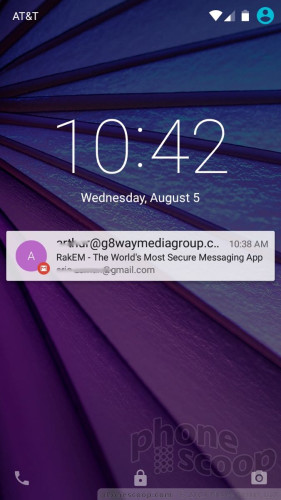
The big difference between Moto Display and Ambient Display is what you see on the lock screen. With Moto Display enabled, you'll see the Gmail logo when a new Gmail arrives, or the SMS logo when a new text arrives. That's all. With Ambient Display, you'll see the exact number of Gmails or text messages you have, and who the most recent one is from.
Whichever you choose, the notifications arrive and repeat once and then go away. The clock is displayed whenever notifications arrive. The Moto G is smart enough to keep the screen dark when it senses that the phone is in your pocket or purse, or face down.
All lock screen notifications can be dismissed if you swipe them left or right. Swiping up will show you more details of any given notification, while swiping down will open the app associated with that specific notification.
If you press the screen lock button, the display wakes fully to show the clock, wallpaper, and notifications listed below the clock. There's a shortcut to the camera available on this screen.
I like how flexible the Moto G's lock screen is, and how it handles notifications.
Home Screens
The Moto G ships with a mostly standard version of Android 5.1 Lollipop. About the only adjustments you can make (aside from normal stuff, like wallpapers, widgets, and so on) are whether or not you activate the Google Now launcher and the Moto app.
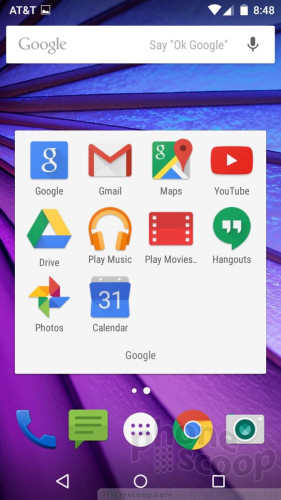
The Moto App bundles together a handful of behaviors we've seen on older Moto X, G, and E handsets. Moto App controls Ambient Display / Moto Display. It also manages the Moto Assist function, which is used for changing Do Not Disturb settings based on location and calendar. Last, it can handle some gesture-based controls. For example, a quick turn of the wrist will launch the camera, and a quick shake of the phone will launch the camera and immediately fire off a photo.
Otherwise, the Moto G's stock Lollipop interface behaves just as every other Android Lollipop phone does.
As for performance, the Moto G uses a 1.4GHz quad-core Snapdragon 410 processor with either 1 GB or 2 GB of RAM, depending on the variant. Our model had 2 GB of RAM and functioned perfectly. Every app on the phone performed smoothly and I didn't experience any hiccups or problems.
Camera
Motorola updated its camera application, but technically only added a few new features. The basic user interface is practically unchanged from the 2013-era camera app. I'm not thrilled about this.
I already mentioned that you can open the camera with gestures. Those are carry-over features from older Moto phones. The camera interface itself is bare-bones. It provides a tutorial to teach you the basics the first time you use it. There are only two buttons: one for the video camera and another for the user-facing camera. The other controls can only be accessed by swiping from the left side of the viewfinder towards the center. This is where Motorola made some additions.
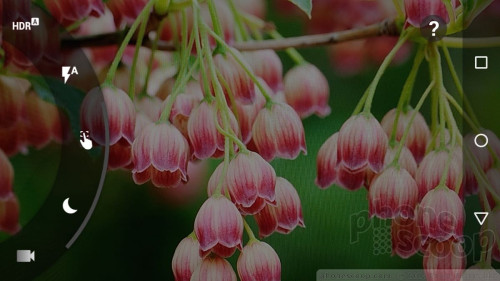
The settings are arranged in a rotating dial. Earlier versions of the Motorola camera app were rather limited in their feature set. The Moto G includes HDR, flash, touch-to-focus, night shot, a timer, panorama, location, memory card, and sound controls all in this dial. You essentially toggle them on or off; that's about it.
As with older Moto handsets, the 2015 G has an always-on burst mode. Press the screen and hold, and the G will focus and then fire off two shots per second until you take your finger off the screen. Swipe up or down to zoom in or out, and swipe from the right edge to the center to open the gallery.
You can't adjust ISO, brightness, or white balance, which may be limiting to some users. I think Samsung, LG, and HTC still offer more robust camera apps, but I suppose there's something to be said for the simplicity of Motorola's camera.
Photos/Video
The Moto G has a 13-megapixel sensor and it's one aspect of the phone that is dramatically improved. Motorola's cameras have been hit-or-miss over the years and I'm happy to say the 2015 Moto G offers above-average performance for its class.
The images are generally sharp and have accurate exposure and white balance. Not all the images are perfect, but the majority of them turn out well. I saw some grain from time to time, and exposure/white balance issues, but they were rare. The f/2.0 aperture definitely helped out in darker shooting environments. Most people will be happy with the images they get from the Moto G. I'd probably use it on vacation, but would jump to my real camera for weddings, and other important events.
The selfie cam captures 5-megapixel images and has a wide angle of view. I was relatively satisfied with the results, though they tended to be a bit grainy.
You can select either 1080p or 720p HD resolution when shooting video. The results are about the same to my eyes. The Moto G did a great job with focus and exposure, but white balance shifted a bit here and there when panning the phone around. The video footage I captured looked decent when blown up on my HDTV, but I've seen better. As with the camera, I'd use the Moto G happily for daily video needs, but might jump to something better for more vital needs.


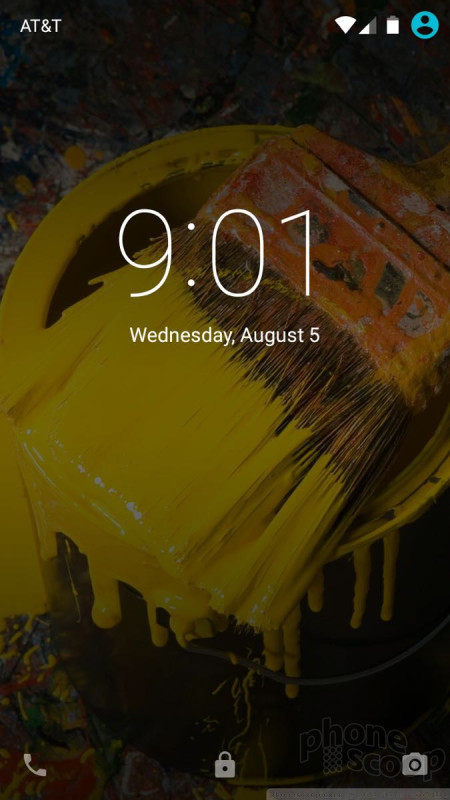




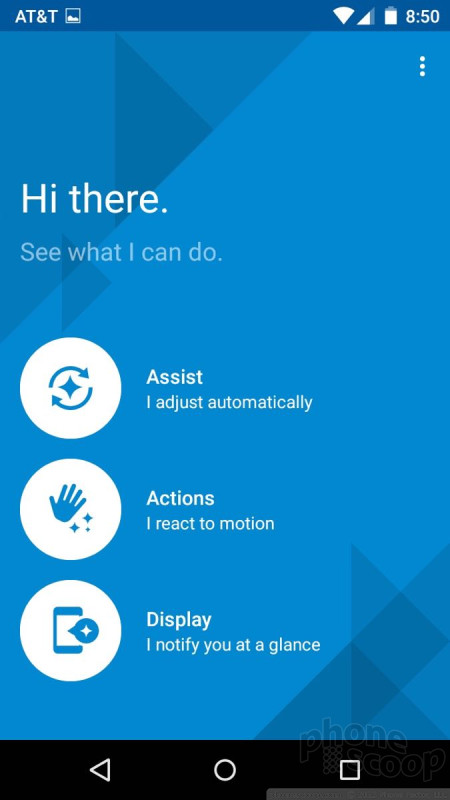







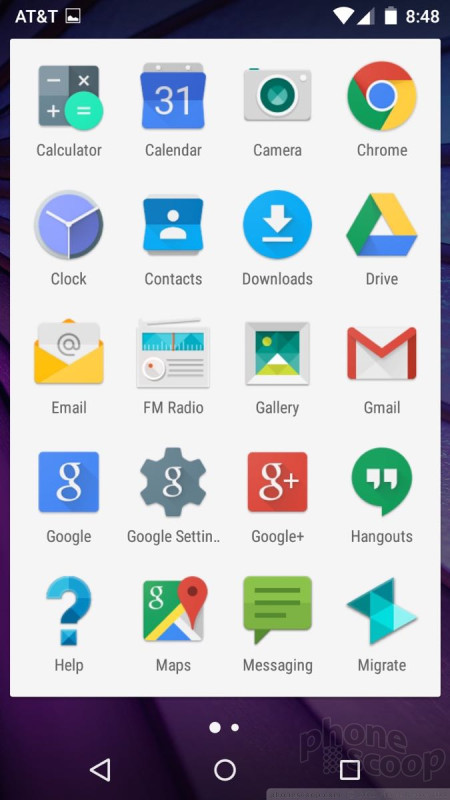






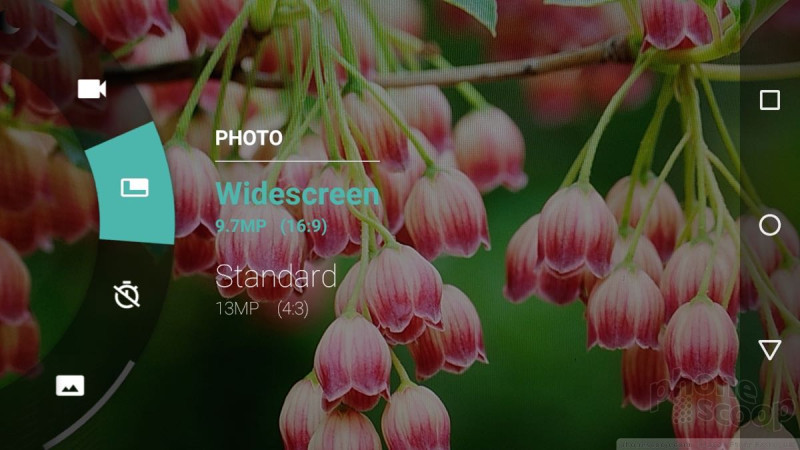

















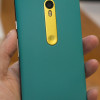 Hands On with the Moto G
Hands On with the Moto G
 Liveblog of Motorola 2015 Event
Liveblog of Motorola 2015 Event
 Motorola Updates Camera, Gallery Apps
Motorola Updates Camera, Gallery Apps
 Moto G Is Waterproof and Can Be Customized Via Moto Maker
Moto G Is Waterproof and Can Be Customized Via Moto Maker
 Motorola Moto G (GSM, 3rd gen.)
Motorola Moto G (GSM, 3rd gen.)



